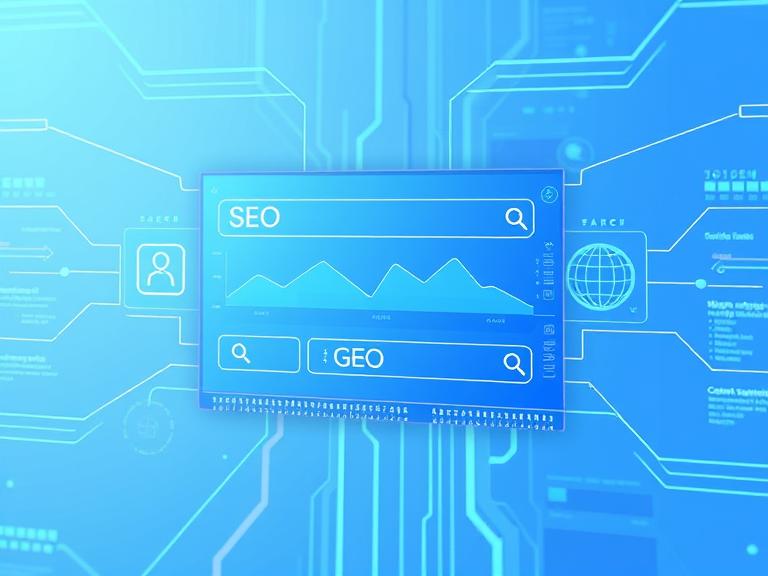
As digital marketing evolves rapidly in 2025, three distinct but interconnected optimization strategies are shaping how brands appear in search results and AI-powered interfaces:
- SEO (Search Engine Optimization)
- AEO (Answer Engine Optimization)
- GEO (Generative Engine Optimization)
Each targets a different phase of content discovery, traditional search, quick answers, and AI-generated summarization.
What Is SEO?
SEO (Search Engine Optimization) is the long-standing strategy of improving website visibility on traditional search engines like Google and Bing.
- Goal: Rank higher in organic search results
- Techniques: Keyword research, technical optimization, backlinks, UX, mobile‑friendliness.
- Benefits: Drives sustained traffic growth—organic traffic can increase by up to 300% within a year.
Use SEO when targeting broad keywords and driving conversion via organic clicks.
What Is AEO?
AEO (Answer Engine Optimization) focuses on structuring content to be picked up as direct answers by answer engines—e.g., Google featured snippets, People Also Ask, and voice assistants like Siri, Alexa, and ChatGPT with live web retrieval.
- Goal: Provide concise, authoritative answers to user questions
- Format: Q&A style, bullet lists, FAQ schema, structured data supporting E‑E‑A‑T (Experience, Expertise, Authoritativeness, Trustworthiness).
- Why it matters: Featured snippets receive ~35% of clicks; voice‐based and zero‑click answers are increasing fast.
AEO is essential for voice search optimization and appearing in direct-answer interfaces.
What Is GEO?
GEO (Generative Engine Optimization) optimizes content so AI tools like ChatGPT, Google SGE, Gemini, and Perplexity cite or reference it within their generated responses.
- Goal: Be included within AI‑generated summaries rather than just ranking in a SERP
- Tactics: Publish in-depth, source‑backed insights and thought‑leadership; incorporate structured content, entity clarity, and citation‑worthy formats
As AI systems increasingly synthesize answers from multiple sources, GEO ensures your brand participates in the conversation.
Comparison Table: SEO vs AEO vs GEO
| Attribute | SEO | AEO | GEO |
|---|---|---|---|
| Full Form | Search Engine Optimization | Answer Engine Optimization | Generative Engine Optimization |
| Primary Goal | Rank in traditional search results | Provide direct answer to user queries | Get cited in AI-generated summaries |
| Target Platforms | Google, Bing SERPs | Featured snippets, voice assistants | ChatGPT, Google SGE, Perplexity, Bing Copilot |
| Content Style | Keyword-rich, long-form, pages | Q&A, structured FAQ, concise answers | Deep articles, entity‑rich, highly credible content |
| Optimization Signals | Backlinks, page speed, UX | FAQ schema, E‑E‑A‑T, structured answers | Authority, citations, expert data, context richness |
| User Behavior | Typing and scanning keywords | Asking questions, voice search | Conversational or exploratory queries via AI tools |
When to Use SEO, AEO & GEO
- SEO is your foundational strategy—essential for visibility, regardless of content type. It aligns with traditional ranking systems.
- AEO is crucial if goal is to capture voice searches or featured snippet positions with structured, direct answers.
- GEO is vital when aiming to influence AI summarization and generation platforms, especially for thought leadership content.
Integrated Strategy: Bringing SEO, AEO & GEO Together
A comprehensive approach blends:
- Keyword-optimized blog posts (SEO)
- FAQs and snippet‑friendly sections (AEO)
- Expert insights, originals, and authoritative citations (GEO)
Example: A blog “AI Adoption in Retail” could:
- Rank for keywords via structured SEO content
- Include Q&A and FAQ schema for featured snippets (AEO)
- Embed original data and expert commentary to earn citations in AI tools (GEO)
Why It Matters in 2025
- AI‑powered result interfaces are increasingly dominant—traditional organic traffic without AEO or GEO may decline by 20‑40% by 2026.
- SEO alone is no longer sufficient. Voice search, zero-click answers, and AI summarization are influencing discovery.
- Brands that fail to adapt risk losing visibility in both search and AI-driven channels.
Conclusion
In today’s complex search landscape, SEO, AEO, and GEO are not competing—they complement each other. To ensure your content is:
- Found (via traditional ranking)
- Recognized (via answer engines or voice interfaces)
- Cited (within AI-generated summaries)
…it’s essential to adopt a balanced, multi-layered optimization strategy.
Want help building a hybrid SEO + AEO + GEO roadmap tailored for your business? I’m here to assist.





